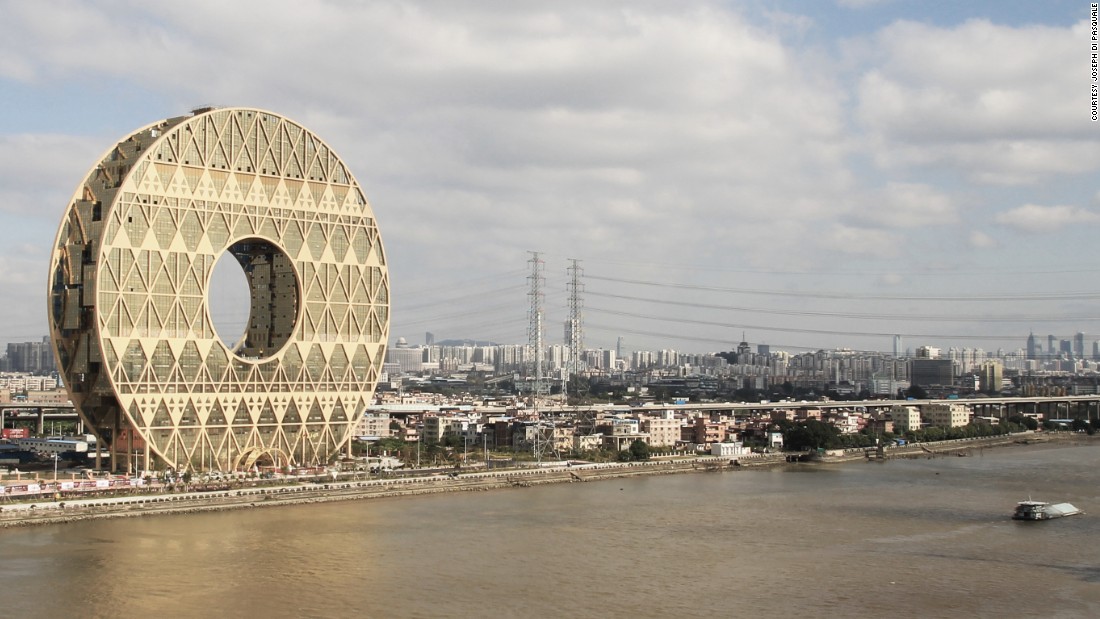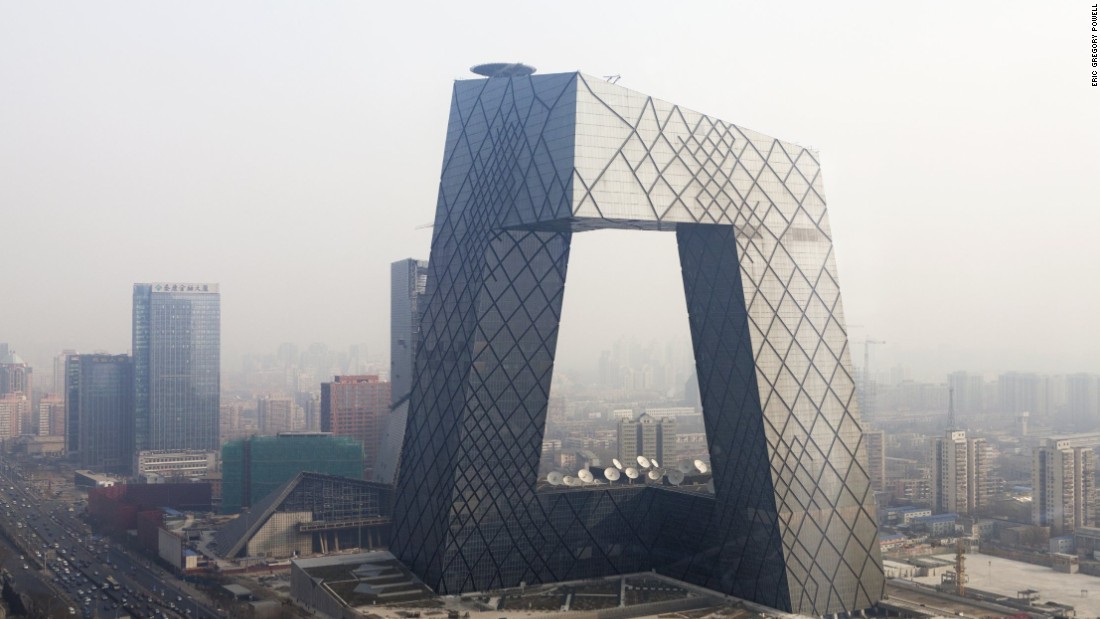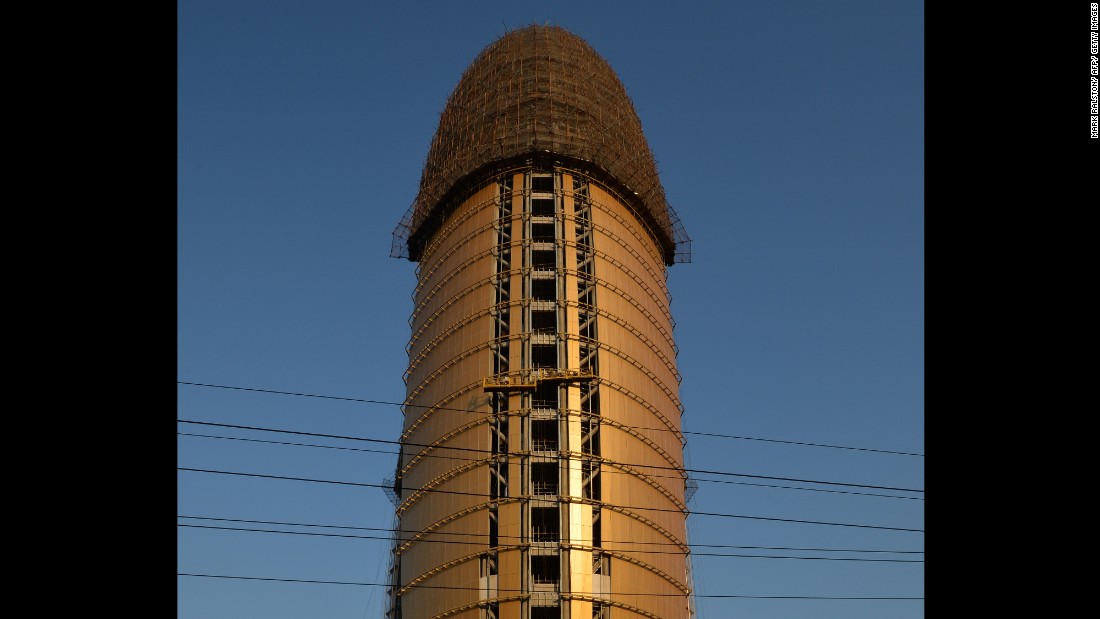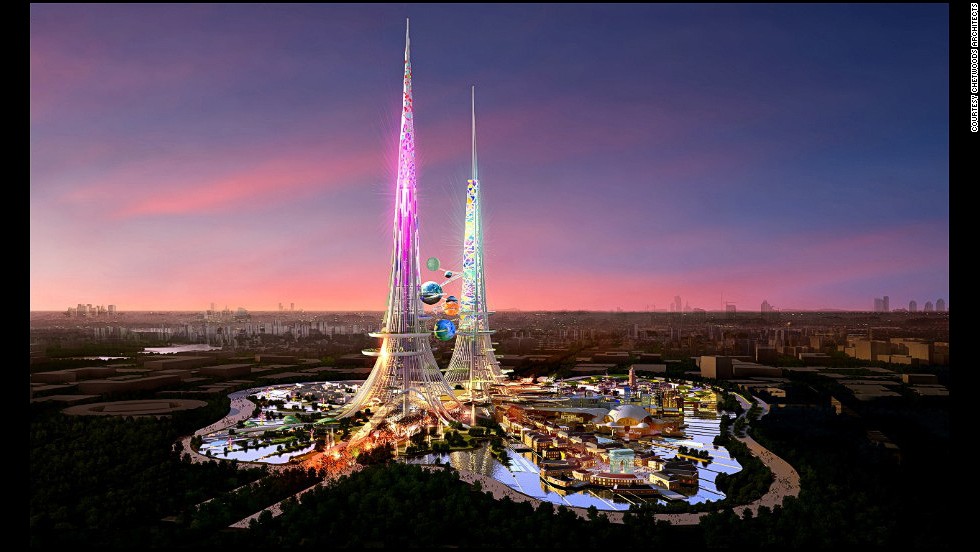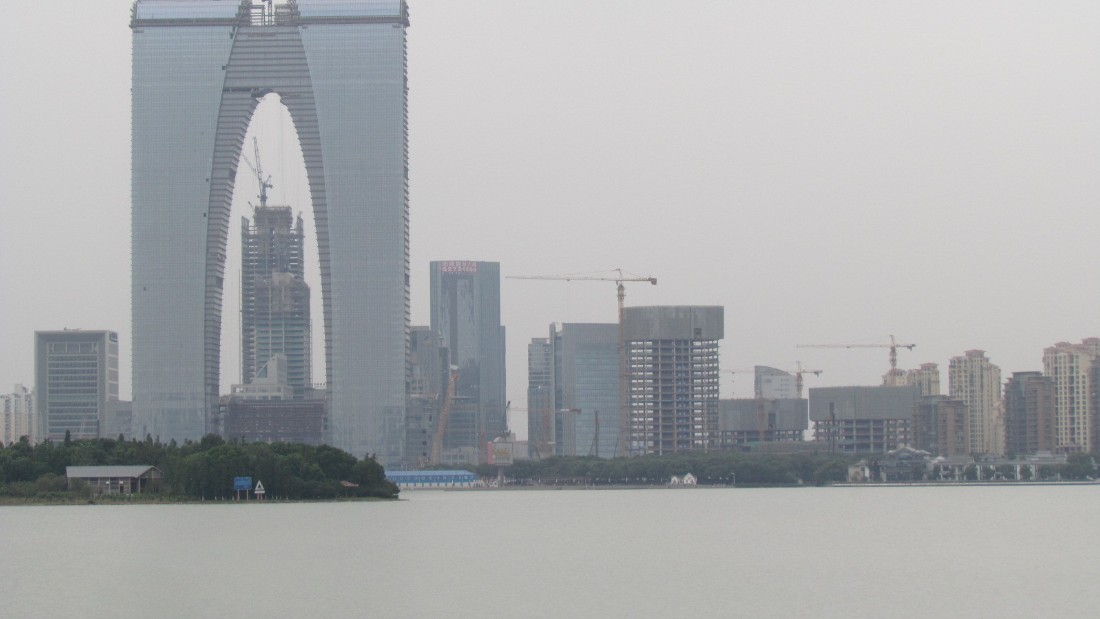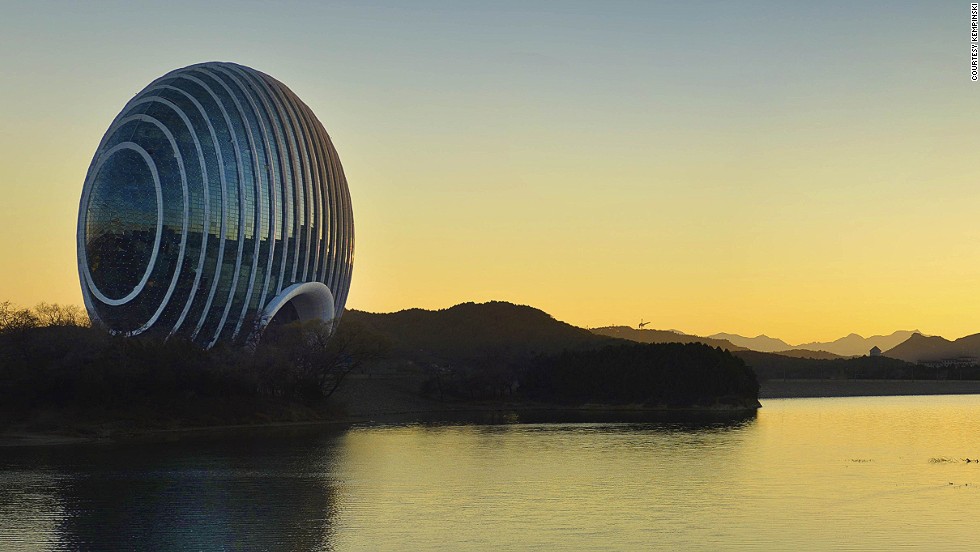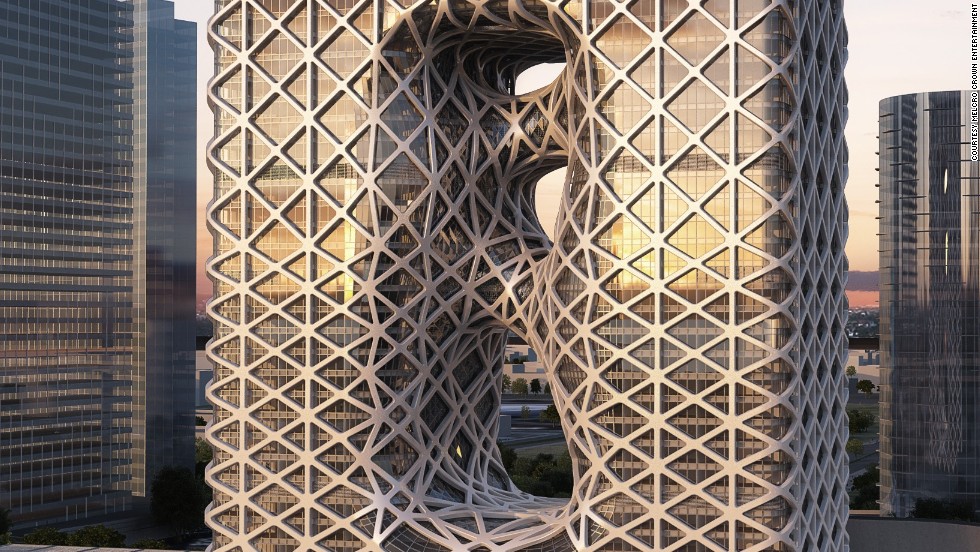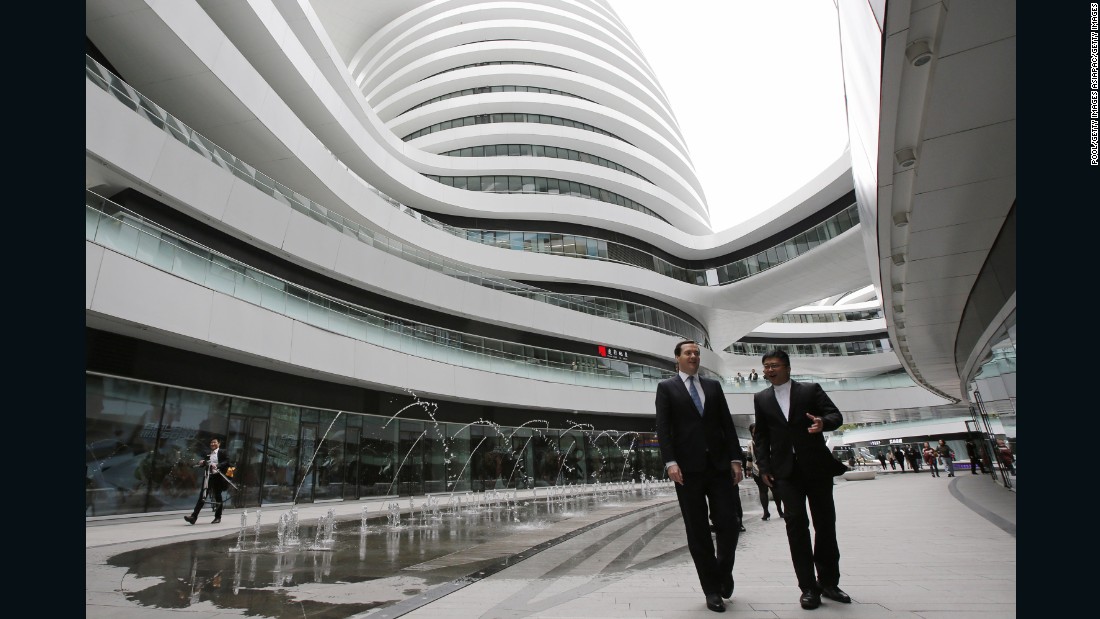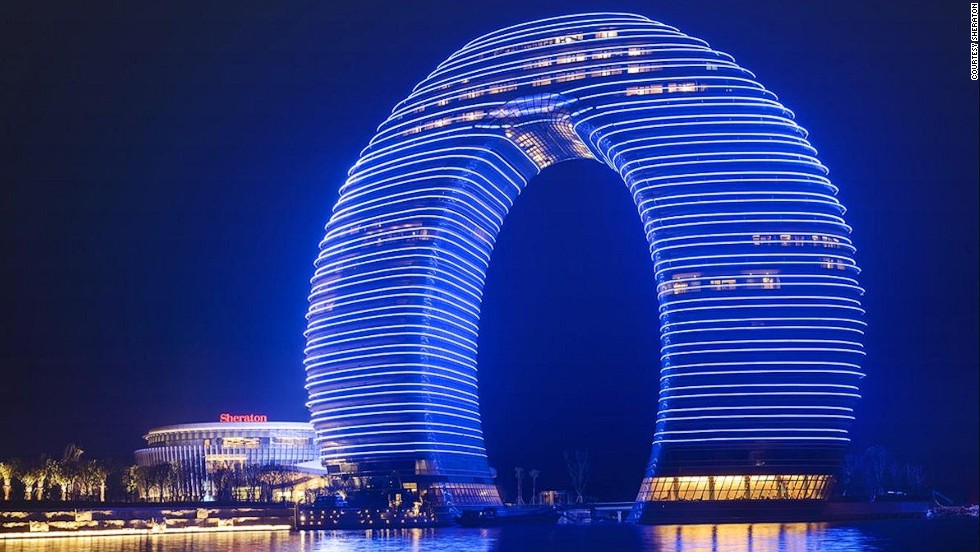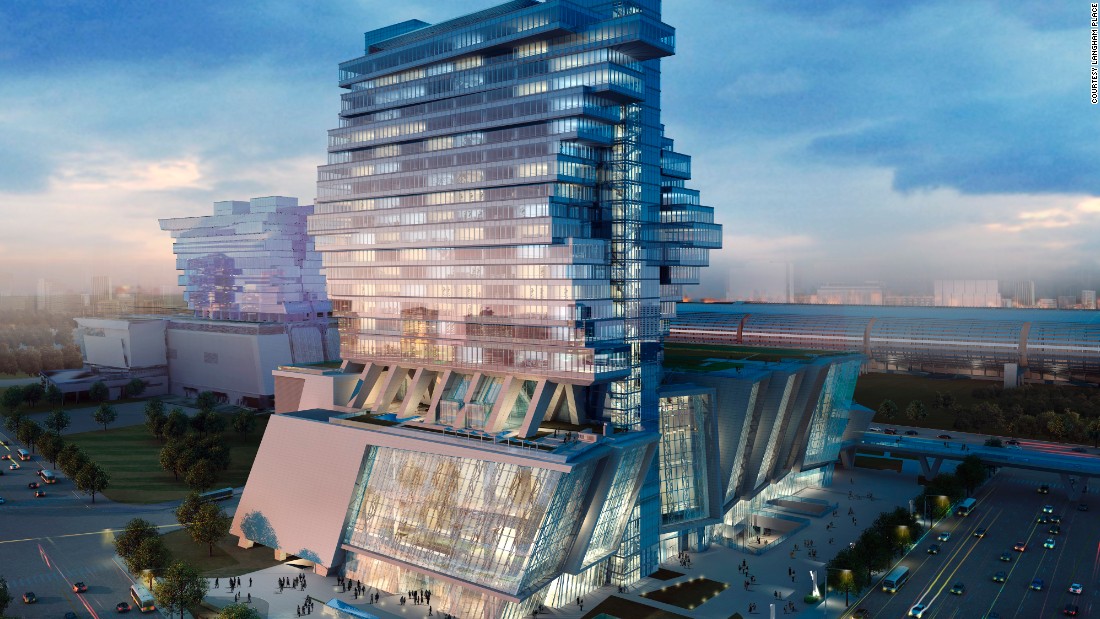未来中国的天际线将更加趋同 [美国媒体]
周日,中国国务院发布一份文件,新的城区建设计划规范将禁止类似“离奇的”和“奇形怪状的”建筑出现,因为它们嘲弄了中国的代表符号和文化继承。
Future Chinese skylines could look more uniform
未来中国的天际线将更加趋同
Beijing (CNN)Chinese architecture will now officially be less weird.
北京(CNN),现在,中国建筑师将不再胡思乱想。
A statement from China's State Council Sunday, says new guidelines on urban planning will forbid the construction of "bizarre" and "odd-shaped" buildings that are devoid of character or cultural heritage.
周日,中国国务院发布一份文件,新的城区建设计划规范将禁止类似“离奇的”和“奇形怪状的”建筑出现,因为它们嘲弄了中国的代表符号和文化继承。
Instead, the directive calls for buildings that are "economic, green and beautiful."
取而代之的是,这份指令要求建筑物“经济,环保和美观”。
China's economic boom over the past several decades has coincided with a boom in the construction of unique, eye-catching buildings and the country has been dubbed an architect's playground.
中国经济过去几十年里高速膨胀,同时,也伴随着奇特的和博眼球的建筑物建设的膨胀,这个国家被称为建筑师的游乐场。
Beijing is home to one of the country's most iconic buildings, the CCTV headquarters by the Office for Metropolitan Architecture (OMA), co-founded by Dutch architect Rem Koolhaas. It has been nicknamed "big pants" by locals, for its resemblance to trousers.
北京就有一栋标志性建筑物,CCTV总部大楼(由大都会建筑事务所与它的合作伙伴荷兰建筑师瑞姆·克哈斯建造)。中国人送它一个绰号“大裤衩”,因为它很像裤衩。
The golden People's Daily headquarters has also been made fun of. Midway through construction, a doctored photo of the phallic building superimposed under the CCTV's "pants" went viral.
人民日报总部大楼也遭到嘲讽,一张把这栋类似阴茎的建筑与CCTV大裤衩PS到一起的图片,被广泛传播。
The CCTV building in Beijing (right), designed by Rem Koolhaas
央视大楼,北京,设计者:瑞姆·克哈斯
Spaceship, teapot
宇宙飞船,茶壶
Other eye-catching buildings include an exhibition center in the shape of the tea pot, while one company built its corporate headquarters in the shape of the Starship Enterprise -- the legendary spaceship from the Star Trek TV and movie franchise.
其他博眼球的建筑包括酷似茶壶的一栋展览中心,一家公司把自己的总部建造成进取号宇宙飞船的模样——这本是电视剧《星际迷航》中的传奇飞船。
The document said "bizarre architecture" that isn't "economical, functional, aesthetically pleasing or environmentally friendly" would be banned although it didn't detail how those criteria would be assessed.
这份文件说,“离奇的建筑物”是“不经济的,低效的,反美学的,或不利于环境的”,将会被禁止,虽然文件中并没有对界定标准进行详细描述。
"I don't feel shocked by this news," says architect Hao Dong, founder of Beijing-based architecture firm Crossboundaries.
北京建筑公司Crossboundaries的创始人兼建筑师郝东说,“我对这则新闻丝毫不感到震惊。”
"The guidelines pretty much point to a positive direction, particularly in China where there are so many buildings completed to stand out, without considering their function."
“这份指导文件指向了一个十分积极的方向,尤其在中国,有如此多的建筑引人注目,却没考虑到任何功能性。”
More prefabricated structures
更多装配式建筑
The guideline adds that construction techniques that use fewer resources, such as prefabricated buildings, would be encouraged, and that within a decade, 30% of new buildings would be prefabricated.
这份指导文件还说,消耗更少资源的建筑技术,比如装配式建筑物,将会被鼓励使用,在十年内,30%的新建筑物将以装配方式建造。
James Shen, one of the founders of People's Architecture Office in Beijing, says prefabricated structures could help the country ensure quality and lower housing costs. His design office has constructed IKEA-like prefabricated structures, that help modernize traditional courtyard homes in the city.
北京People's Architecture Office的创建者之一詹姆斯·沈说,装配式建筑可以帮助这个国家保证建造质量和降低住房成本。他的设计工作室已经建立了类似宜家的装配式建筑,可以帮助对城市中的传统庭院住宅进行现代化改造。
"We constantly hear in the news about rising housing costs, environmental waste, pollution and poor labor conditions. More oversight in the building industry and increased efficiency in production could help."
“我们总是会听到这样的新闻:高企的居住成本,环境破坏,垃圾和悲惨的劳工状况。更多的监管和提升生产效率会对这些有所帮助。”
The directive also called for an end to gated communities. These residential housing estates that strictly control public access have sprung up in China as incomes have risen.
这份指导文件也要求停止建造封闭小区。严格限制外人进入的居民区随着中国人收入的增长也出现了爆发式增长。
Those already in existence will gradually be opened up to pedestrians and traffic, the document said.
这份文件说,那些已经存在的封闭小区会逐渐向行人和公共交通开放。
Creative with constraints
有约束的创造
The new directive appears to be a way of formalizing construction rules that have been in the making for some time.
这份新的文件看起来为那些正在不断制定出的建筑律条提供了一个规范化的开端。
In October of 2014, President Xi Jinping called for less ostentatious buildings in China's skylines, according to state media.
根据国家媒体报道,2014年10月,习近平主席要求中国减少虚有其表的天际线建筑。
And later that year, the vice-mayor of Beijing said the municipal government would be taking a more hands on approach to regulate buildings' size, style, color, and materials.
今年晚些时候,北京市副市长说,市政府将会在规范化建筑面积,风格,色彩和材料上发挥更大作用。
"Architects can be creative with constraints, we've shown that with our work," said Shen. "It's not having enough constraints that creates problems and I think that's what's happened in China. Endless building production has happened with little social responsibility."
沈说,“建筑师可以在限制范围内发挥创造力,我们已经通过我们的工作展示了这点。”“现在没有足够的约束,导致了问题的出现,我认为这就是中国已经发生的事情。无数的建筑已经建成,却几乎没有承担社会责任。”
CNN called the State Council for clarification on the new guidelines and was referred to the Ministry of Housing and Urban and Rural Development. Calls to that ministry went unanswered.
CNN致电国务院对这份新的指导文件进行说明,也致电了住建部和城乡统筹发展部门。尚未得到回应。
版权声明
我们致力于传递世界各地老百姓最真实、最直接、最详尽的对中国的看法
【版权与免责声明】如发现内容存在版权问题,烦请提供相关信息发邮件,
我们将及时沟通与处理。本站内容除非来源注明五毛网,否则均为网友转载,涉及言论、版权与本站无关。
本文仅代表作者观点,不代表本站立场。
本文来自网络,如有侵权及时联系本网站。
下一篇: 中国的导弹策略 [美国媒体]
图文文章RECOMMEND
热门文章HOT NEWS
-
1
Why do most people who have a positive view of China have been to ...
- 2
- 3
- 4
- 5
- 6
- 7
- 8
- 9
- 10
推荐文章HOT NEWS
-
1
Why do most people who have a positive view of China have been to ...
- 2
- 3
- 4
- 5
- 6
- 7
- 8
- 9
- 10

